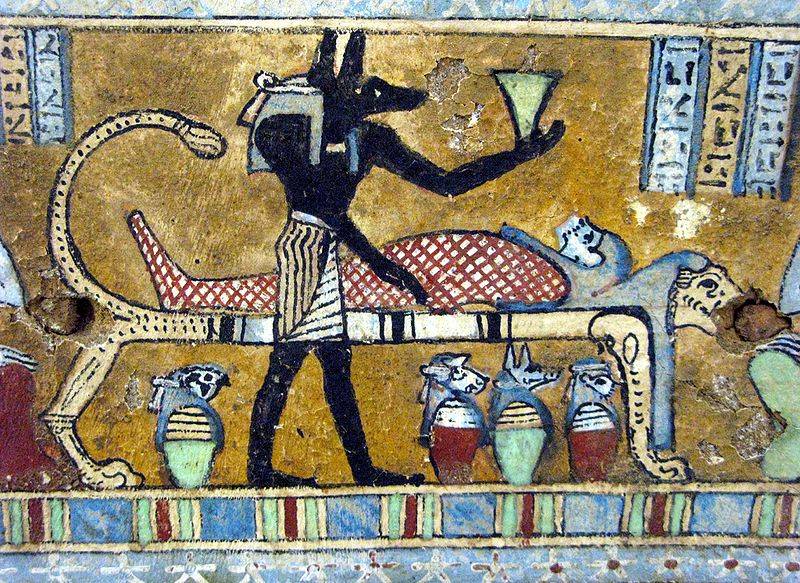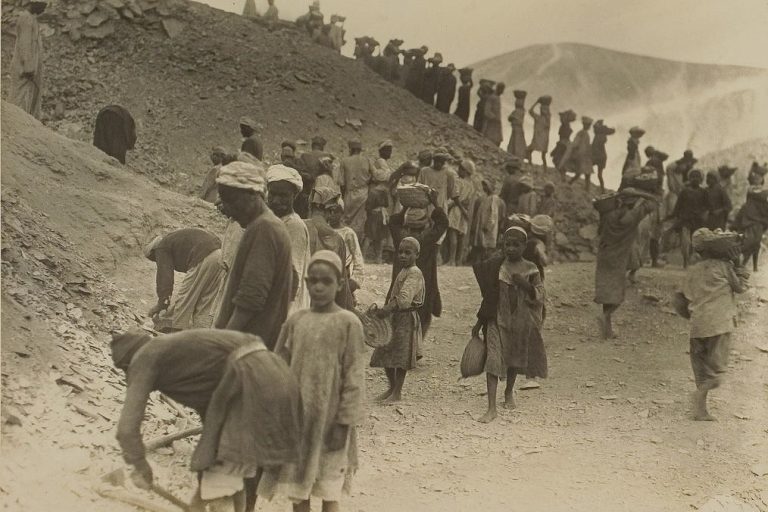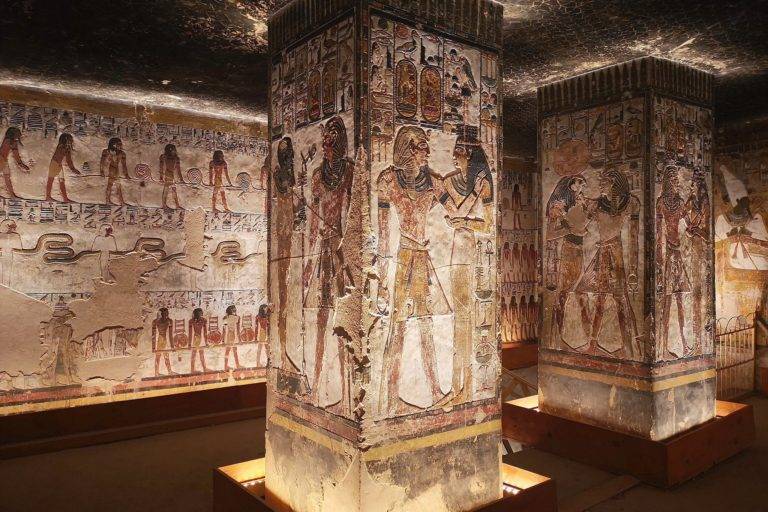Funerals in ancient Egypt
Ancient Egyptian funerary practices
When you visit the Valley of the Kings or explore the Egyptian Museum in Cairo, you can feel the deep history around you. The Ancient Egyptians thought a lot about the afterlife. Their funerals were not just goodbyes; they were detailed ceremonies meant to help the dead become eternal beings. For today’s travelers, learning about these funeral traditions gives meaning to every tomb, sarcophagus, and artifact you see.
This guide combines history, archaeology, and travel tips to help you understand funerals in Ancient Egypt as more than just old rituals. These traditions are stories you can still find across Egypt today.

Beliefs About Death and the Afterlife
The Egyptians believed that death was a journey, not an end. Their burial customs were based on a complex spiritual belief system:
– Ka: the life force that needed food and drink offerings.
– Ba: the soul, often shown as a bird with a human head, that could leave the tomb and return.
– Akh: the transformed spirit, able to live forever with the gods.
They imagined the afterlife as the Field of Reeds, a paradise that resembled earthly life but was perfect. To enter it, the deceased had to pass the judgment of Osiris, where their heart was weighed against the feather of Ma’at (truth). A heart heavy with sin would be eaten by Ammit, known as the “Eater of the Dead.”
Traveler tip: When visiting the tomb of Seti I in Luxor, pay attention to the painted scenes of the Book of the Dead. These texts were not just religious ideas—they were practical guides, spells, and maps for navigating the afterlife.
Luxor Tours & Activities
Looking to save some costs on your travel? Why not join a shared group tour to explore Luxor, Egypt? Here are some activities you might be interested in:
Preparing the Body: The Mummification Process
No image of Ancient Egypt is more famous than a wrapped mummy. Mummification was not just about keeping the body intact; it was about changing it. The body was important for the soul, and without it, you could not have eternal life.
The process, which got better during the New Kingdom, took about 70 days:
1. Purification – The body was washed with palm wine and water from the Nile.
2. Organ Removal – The stomach, lungs, liver, and intestines were taken out and kept in canopic jars. Each jar was protected by one of the Four Sons of Horus.
3. Dehydration – The body was filled with natron (a natural salt) for 40 days.
4. Wrapping – Priests wrapped the body in many yards of linen, adding amulets like scarabs and the Eye of Horus for protection.
5. Final Rites – The “Opening of the Mouth” ceremony gave back the senses to ensure the deceased could eat, speak, and breathe in the afterlife.
Traveler tip: At the Mummification Museum in Luxor, you can see royal mummies up close. Look for the darkened skin from resin and the careful wrapping. These details show the amazing skill of the embalmers.

Funerary Processions and Ceremonies
Funerals in Ancient Egypt were public events that were emotional and full of meaning. The coffin was carried on a sled pulled by oxen, often taken across the Nile to the west bank, which was seen as the land of the dead.
The procession included:
– Family members who mourned by tearing their clothes and covering themselves in dust.
– Professional mourners who acted like the goddesses Isis and Nephthys, crying out to ask for protection from the gods.
– Priests who burned incense, chanted spells, and carried special items for rituals.
– The Opening of the Mouth ritual, done again at the tomb entrance, which symbolically brought the dead person back to life.
Traveler tip: At Deir el-Medina, you can see colorful paintings of these processions. Look for mourners with their arms raised and priests holding ritual tools that look like adzes.
![[KV62] Tutankhamen Tomb](https://exploreluxor.org/wp-content/uploads/2024/11/Tomb-of-Tutankhamun--1024x768.jpg)
Tombs, Coffins, and Grave Goods
The tomb was not just a burial site; it was a “house of eternity.” Its design and the items inside showed a person’s status and spiritual needs.
Tombs changed from simple pit burials to mastabas, then pyramids, and later to rock-cut tombs in the Valley of the Kings.
Coffins had protective spells and images of gods. Nested coffins, like Tutankhamun’s, represented layers of protection.
Grave goods included food, clothing, jewelry, weapons, and small figurines called shabtis, which were meant to help the deceased in the afterlife.
Traveler tip: Tutankhamun’s treasures in the Grand Egyptian Museum (GEM) are the best examples of grave goods. From golden shrines to everyday sandals, they show how Egyptians prepared their dead for eternity.

Social Status and Funerary Practices
Not all funerals are the same. Pharaohs received grand burials with golden masks and large tombs, while common people had simpler ceremonies.
Pharaohs and elites had monumental tombs, fancy coffins, and many treasures. Nobles and officials were buried in decorated tombs with paintings of daily life and offerings. Commoners were buried simply, often in reed mats or plain coffins, with modest gifts like bread, beer, and amulets.
Traveler tip: Visit the Tombs of the Nobles in Luxor to see how middle-class officials decorated their tombs with scenes of farming, fishing, and family life. This shows their belief that eternity continues the joys of earthly life.

Mythology and Symbolism
Every part of the funeral involved mythology. Anubis, the jackal-headed god, oversaw embalming. Osiris, the god of the dead, judged the soul. The weighing of the heart ceremony represented moral purity. People placed amulets like scarabs and ankhs on the body for protection and rebirth.
Traveler tip: In the Luxor Museum, look for heart scarabs inscribed with spells from the Book of the Dead. These were meant to silence the heart during judgment, helping ensure a good verdict.

Living With the Dead: Ongoing Rituals
Funerals do not end the bond between the living and the dead. Families keep visiting graves and leave food offerings and letters for their loved ones who have passed away. During festivals like the Beautiful Feast of the Valley in Thebes, families picnic in cemeteries and share meals with their ancestors.
Traveler tip: If you visit Luxor in spring, ask local guides about these traditions. Communities still hold cemetery feasts during religious festivals, keeping memories alive for thousands of years.

The Legacy of Ancient Egyptian Funerals
Egyptian funerals were impressive and have greatly influenced history. Ongoing archaeological finds—like the treasures of Tutankhamun and the Saqqara embalming workshop—show how Egyptians prepared for life after death.
Their influence reached beyond Egypt. Greek and Roman writers admired Egyptian embalming. Elements of Egyptian beliefs about judgment and the afterlife appear in later religious traditions.
Traveler tip: To see this legacy in person:
– Visit the Valley of the Kings in Luxor to explore royal tombs.
– Check out the Grand Egyptian Museum in Giza for Tutankhamun’s treasures.
– Visit the Mummy Room at the National Museum of Egyptian Civilization in Cairo for a closer look at history.

Lessons From Eternity
Funerals in Ancient Egypt were important for more than just saying goodbye; they celebrated life, values, and the order of the universe. By mummifying bodies, preparing tombs, and calling on the gods, Egyptians aimed to secure a place in the afterlife.
For today’s visitors, learning about these funerary customs changes how you see Egypt. Tombs are not just stone structures; they are reminders of a civilization that believed in eternal life. Whether you admire the golden mask of Tutankhamun or look at the painted walls in a noble’s tomb in Luxor, you are not just viewing the past. You are witnessing the Egyptians’ strongest belief: their hope for eternity.
Got a Question?
F.A.Qs
The full mummification process usually lasted about 70 days. This included purification, removal of organs, drying the body with natron, wrapping it in linen, and performing final rituals like the Opening of the Mouth.
Egyptians believed the body was the home of the ka (life force) and ba (soul). If the body decayed, the soul could not survive in the afterlife. Preserving the body ensured eternal life.
Canopic jars held the stomach, lungs, liver, and intestines. Each jar was protected by one of the Four Sons of Horus. Later, embalmers sometimes treated the organs and returned them to the body, but the jars remained symbolic.
This ritual was performed by priests to restore the senses of the deceased. By touching the mummy’s mouth and eyes with ritual tools, they ensured the dead could eat, speak, and see in the afterlife.
Yes. Pharaohs and nobles had elaborate tombs, golden coffins, and vast treasures. Commoners were often buried in simple graves with modest offerings. Still, the hope for eternal life was universal across all classes.
Grave goods included food, clothing, jewelry, weapons, and figurines called shabtis, which were meant to serve the deceased in the afterlife. Even modest burials included bread, beer, and amulets.
Specialized priests, often wearing masks of Anubis, oversaw embalming and ceremonies. Family members and professional mourners also played key roles in processions and laments.
Did you know that
By purchasing through our links, you support us at no additional cost.
Thank you for your support. ♥️






